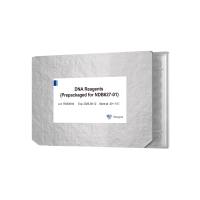Single-Cell cDNA Library Construction Using Cycling aRNA Amplification
互联网
互联网
相关产品推荐

细胞包被液(适合原代细胞)(Cell adherent reagent)(200x)
¥680

酶切片段化法DNA建库试剂盒(VAHTS Universal Plus DNA Library Prep Kit for Illumina V2)(ND627/NDB627)
¥6400

POLR3A/POLR3A蛋白Recombinant Human DNA-directed RNA polymerase III subunit RPC1 (POLR3A)重组蛋白DNA-directed RNA polymerase III largest subunitDNA-directed RNA polymerase III subunit ARNA polymerase III 155KDA subunit ;RPC155RNA polymerase III subunit C160蛋白
¥1344

SARS-CoV-2 (2019-nCoV) Spike Gene ORF cDNA clone expression plasmid (Codon Optimized)
¥4690

virE2/virE2蛋白//蛋白/Recombinant Agrobacterium tumefaciens Single-strand DNA-binding protein (virE2), partial重组蛋白
¥69
相关问答

